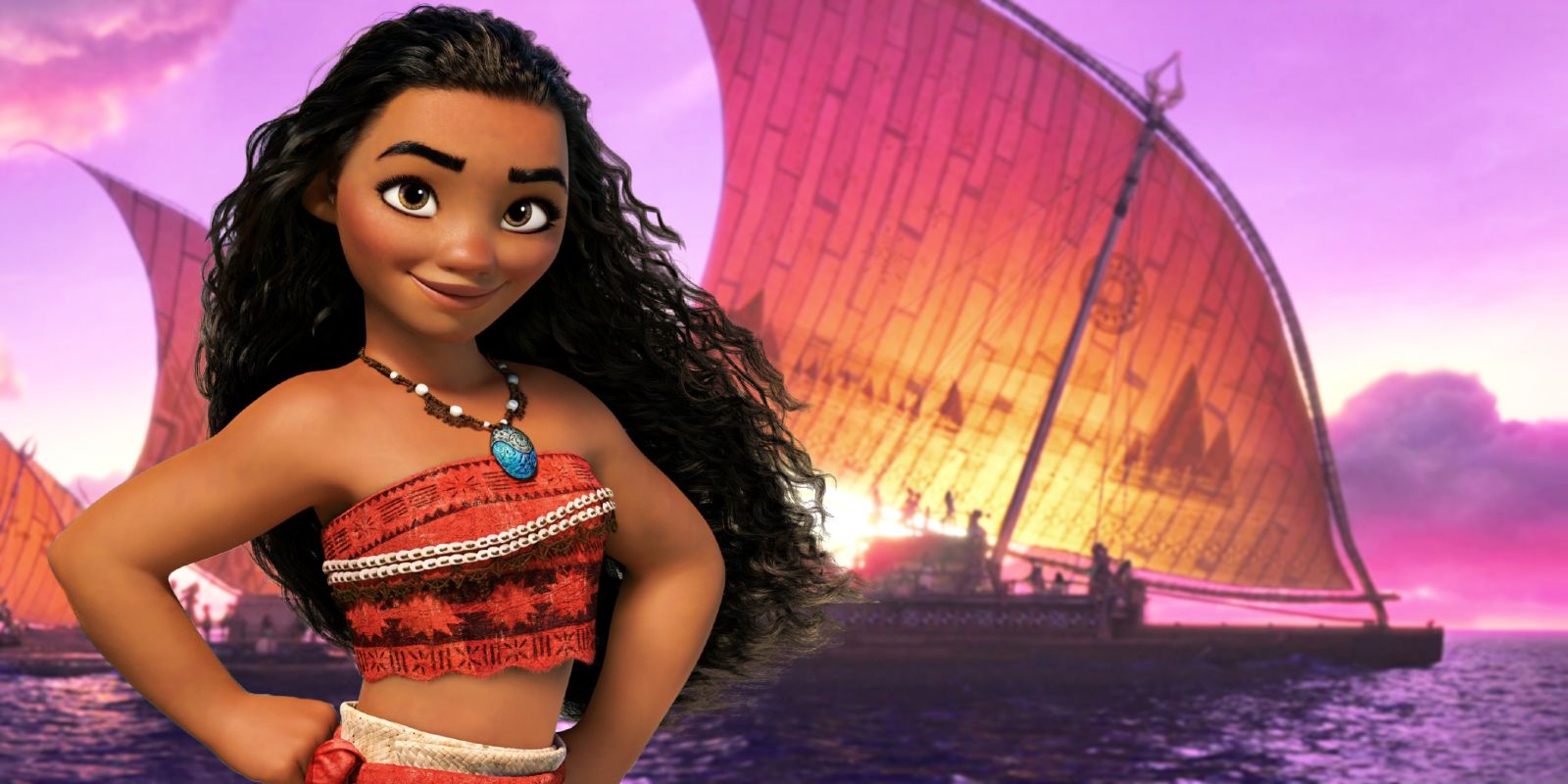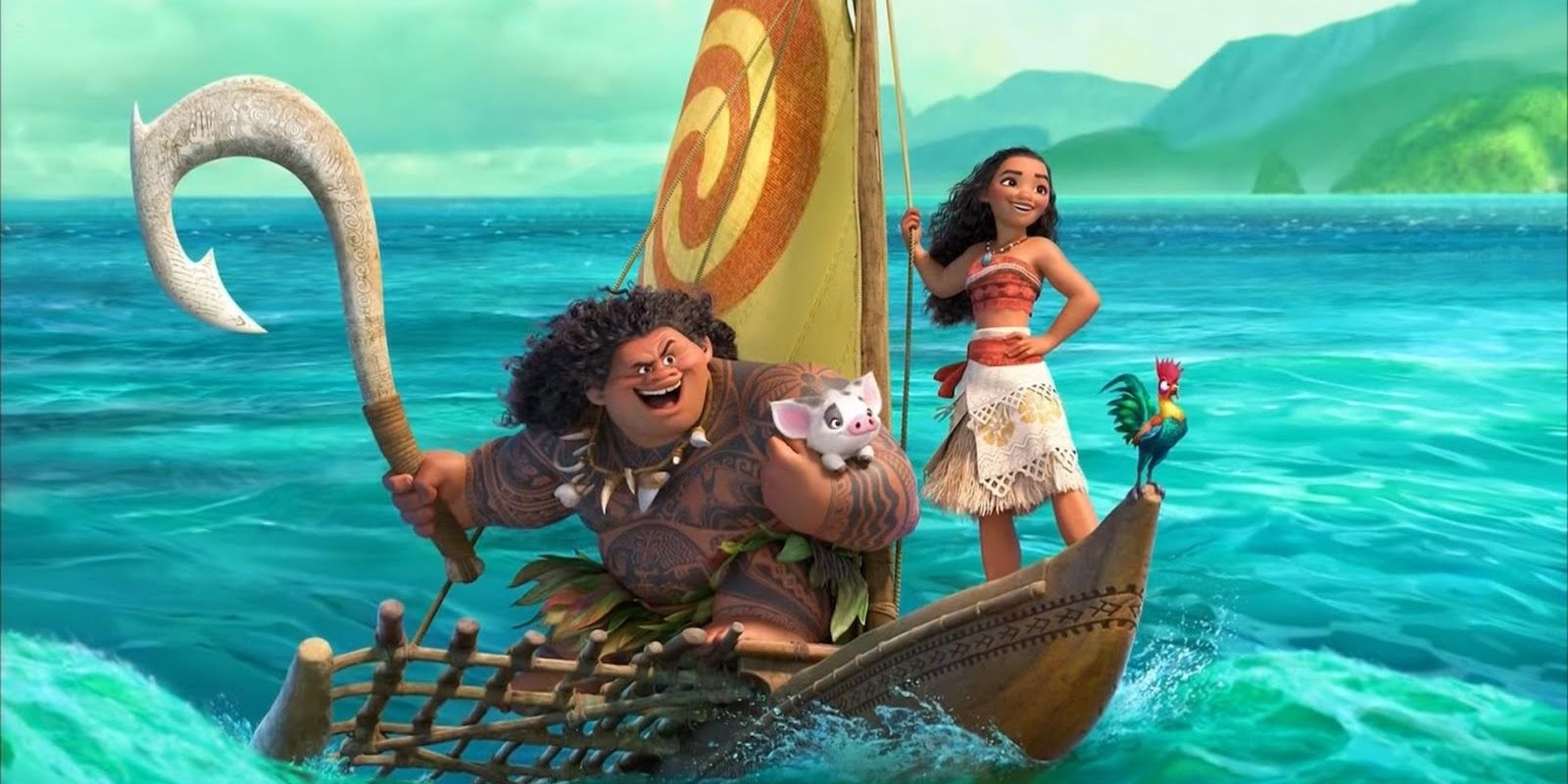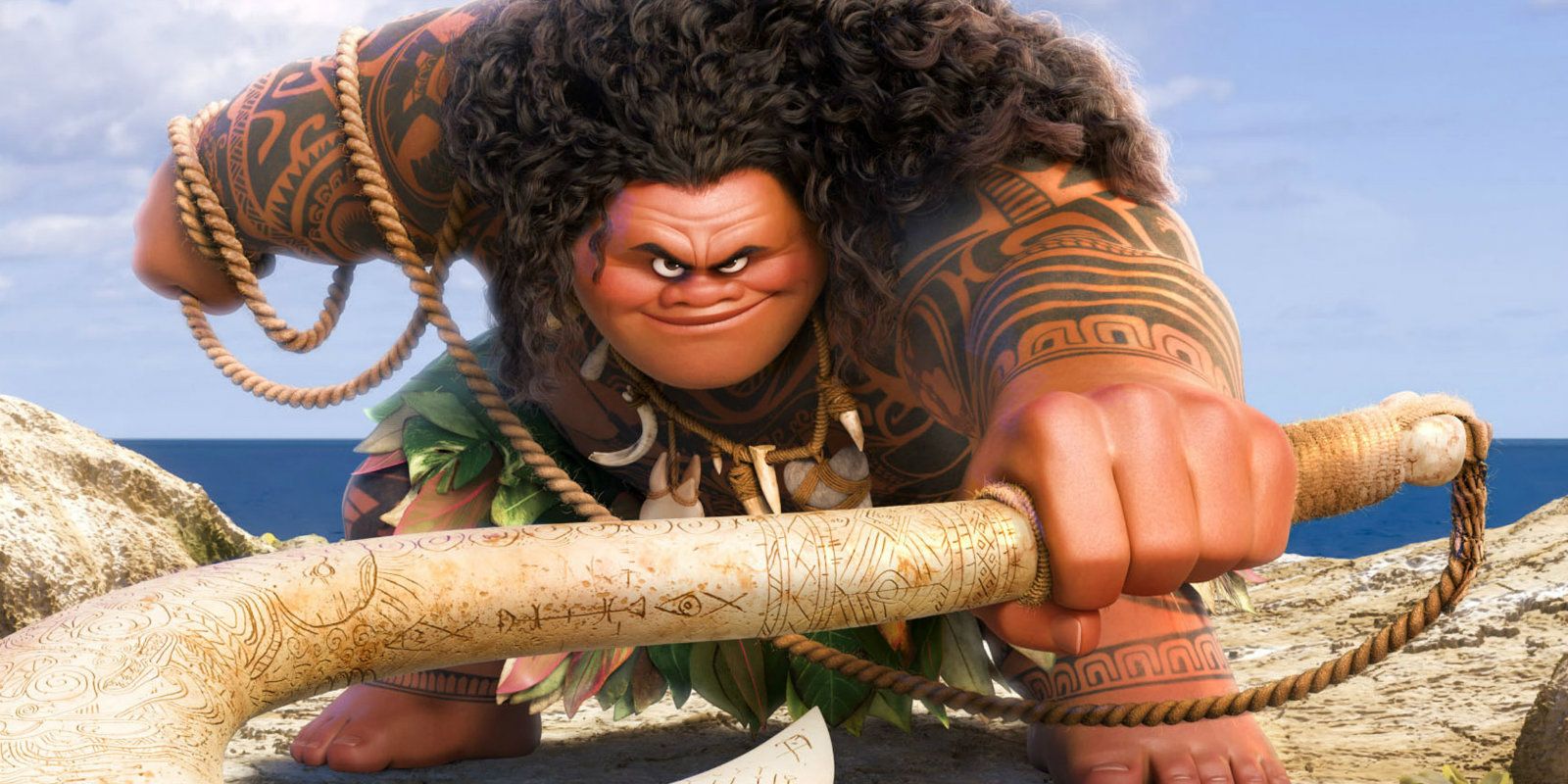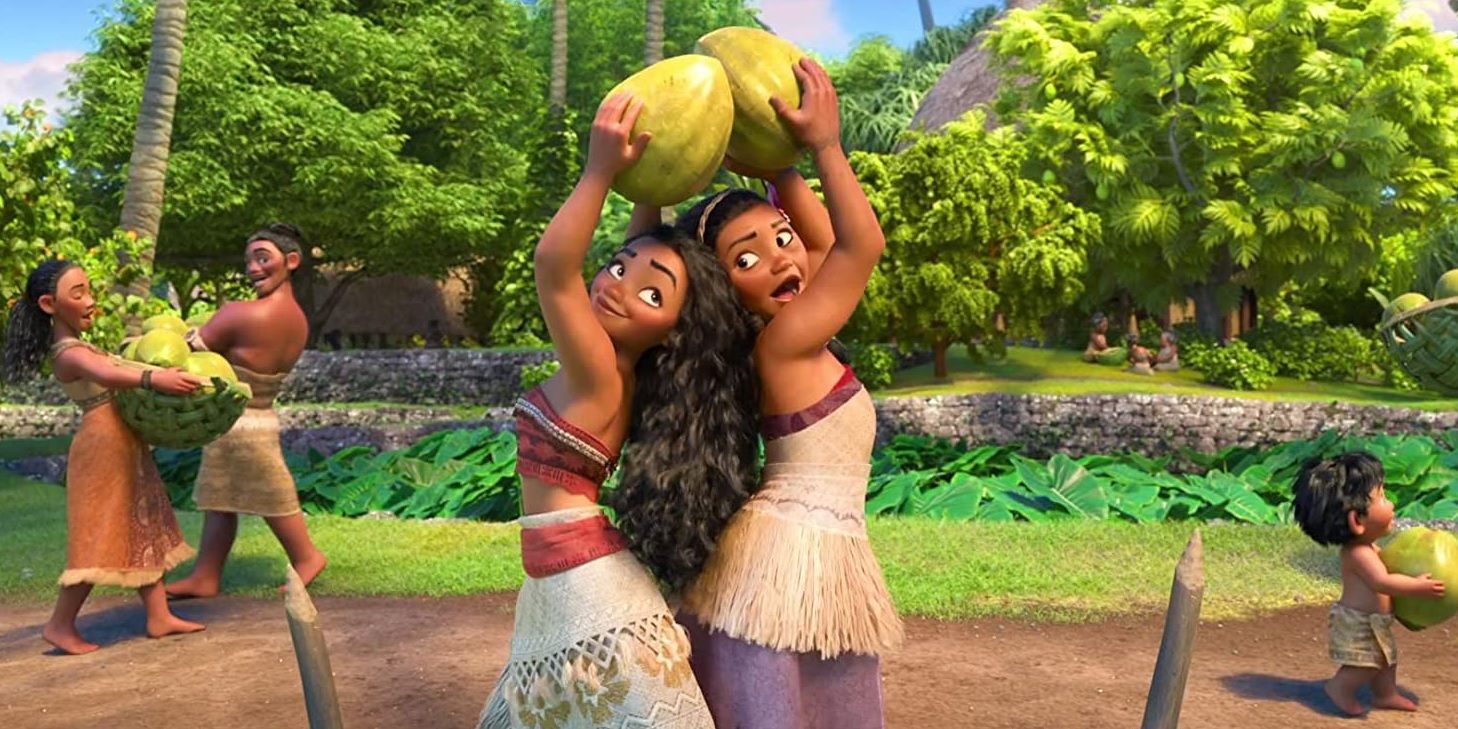Disney’s Moana was inspired by Polynesian myths, history, and culture and has been widely praised for its efforts at cultural authenticity. The film tells the story of Moana (voiced by Auli’i Cravalho), daughter of Motunui’s chief Tui, who is chosen by the ocean to return the goddess Te Fiti’s heart to her after it was stolen by the shape-shifting demigod Maui (voiced by Dwayne ‘The Rock’ Johnson) and lost to the depths of the sea.
When directors Ron Clements and John Musker pitched their idea to then-Chief Creative Officer John Lasseter for a Polynesian mythology-inspired animated film, the latter advised for the men to go on research trips. Over the five years it took to develop and produce the movie, Clements and Musker travelled to Fiji, Tahiti and Samoa, and recruited experts from across the South Pacific to the Oceanic Story Trust to consult on the film’s cultural accuracy and representation. Anthropologists, historians, cultural practitioners, linguists, tattoo artists, elders, fishermen, and others were assembled to advise on the film’s most minute details.
Though the initial pitch centered on tales of the demigod Maui, the story was eventually reframed to tell that of Moana, a strong-willed girl kept away from the ocean by her parents until a blight strikes her island, killing fish and vegetation alike. As Moana’s opening scenes explain, when the mother island Te Fiti, who yields the power to create life and brings other islands to existence, has her heart - an engraved pounamu (a stone of great cultural significance in Māori culture, and which is considered a taonga, or treasure) - stolen by Maui, her island begins to decline and emits a powerful wave of darkness. Now in possession of her heart, Maui is attacked by the fire demon Te Ka and loses both his magical fish hook and Te Fiti’s heart to the ocean. The darkness is what brings blight to Moana’s home and what motivates her to defy her parents’ wishes and embark on her journey across the sea to save her people, a millennium after the heart’s theft.
Moana Learns Wayfinding & References The Long Pause
The audience learns that Moana’s people have long since stopped voyaging and have placed a taboo (itself a word of Tongan origin) on going beyond the island’s reef, which is why Moana’s father reacts with anger when she suggests fishing outside its limits. This references what scholars call the "Long Pause" in Polynesian history. Western Polynesia was colonized three and a half millennia ago by people who travelled thousands of miles across the waters using Stone Age technology and somehow discovered small islands amidst the expanse that is the largest ocean on the planet. These explorers then travelled back and forth to settle their newfound homes. Yet while those islands in the West, including Fiji, Samoa, and Tonga, were quickly colonized, it was another 2,000 years before they settled the islands of Central and Eastern Polynesia, including Tahiti, Bora Bora, Easter Island and Hawai’i, a mere 500 to 1,500 years ago.
No one knows why the Polynesians stopped voyaging for so long, nor why they decided to once again venture east after so many years. Migration scholars have theorized on a number of reasons, from ciguatera fish poisoning from toxic algae bloom to favorable wind caused by a sustained period of El Niño (a warming of average sea temperatures). The enduring mystery of the Long Pause is where Disney finds creative freedom with Moana’s story. After generations spent on land because the "darkness" has made the seas too treacherous, Moana inspires her people to rediscover the art of wayfinding and to start exploring once again.
Learning to navigate the waters proves a significant part of Moana’s character arc, and this emphasis pays homage to the cultural significance of traditional Polynesian navigation, methods which are still taught in Taumako. Polynesian navigation involved some navigational instruments that long predate those used by European explorers, but also depended heavily on observing the stars and other signs from the sky and sea and on knowledge passed through oral tradition. Navigation was a precise science, and its techniques, along with outrigger canoe construction methods, were kept as guild secrets.
Maui The Demigod Is Assembled From Different Polynesian Myths
Moana is taught wayfinding by Maui, the Polynesian demigod. In the movie, Maui recounts his victories and adventures through his moving tattoos (interestingly, "tattoo" is a loanword of Samoan origin) and the lyrics of "You’re Welcome." Much of Moana is the result of Disney combining aspects of different Polynesian cultures, and The Rock’s character is no exception. With versions of Maui existing in various forms in cultures across most of the Pacific Islands, to create Moana’s mythic character, Disney amalgamated many stories about the demigod and a helping of creative license, for instance in making Maui an orphan to draw sympathy.
In traditional Māori lore, Maui, much like his Disney counterpart, draws much of his strength from his magical fishhook. The stories tell of how Maui used his hook to pull up the Pacific Islands which make Polynesia. There was some controversy about the initial design for Disney’s Maui, as the final look was criticized by some for making Maui appear obese, which feeds into negative stereotypes of Polynesian men. However, many others found no issue with this aspect of Maui’s portrayal, arguing that the demigod looked powerful and larger-than-life, as one would expect a demigod should.
The biggest change, initiated by the Oceanic Trust, was to his hair: the original design had Maui, much like his voice actor, be completely bald. Trust member and Tahitian cultural practitioner Hinano Murphy explained [via Vanity Fair] that when he first saw the sketches, he told the animators that “we have to put more hair on Maui’s head because it’s very important. The mana is in the hair, the power of the demigod. It looked just like he was naked. For us, it was really important.” In many Melanesian and Polynesian cultures, mana is the spiritual life force, energy, or healing power that can exist in objects, places, and persons. Mana is a foundation of the Polynesian worldview, and so to give Maui a full head of curls was a characterization crucial to respecting Polynesian culture.
The Devil Is In The Details
The two most significant parts of Moana’s journey, her learning wayfinding and her relationship with Maui, were drawn from Polynesian history and inspired by their mythology. Thanks to the Oceanic Trust however, there are many other details that enrich Moana’s story. From the traditional fale (Samoan houses), Chief Tui’s pe’a (traditional male tattoo of Samoa), the canoes being drawn in intricate detail and based off ancient Fijian-style boats, and the kind of pits used to cook food in, to Moana’s clothing being made from materials and designs authentic to the time and culture, Moana weaves a rich tapestry of minute but deeply accurate details. It just goes to show what can be accomplished when creative studios work to consult the right people.




